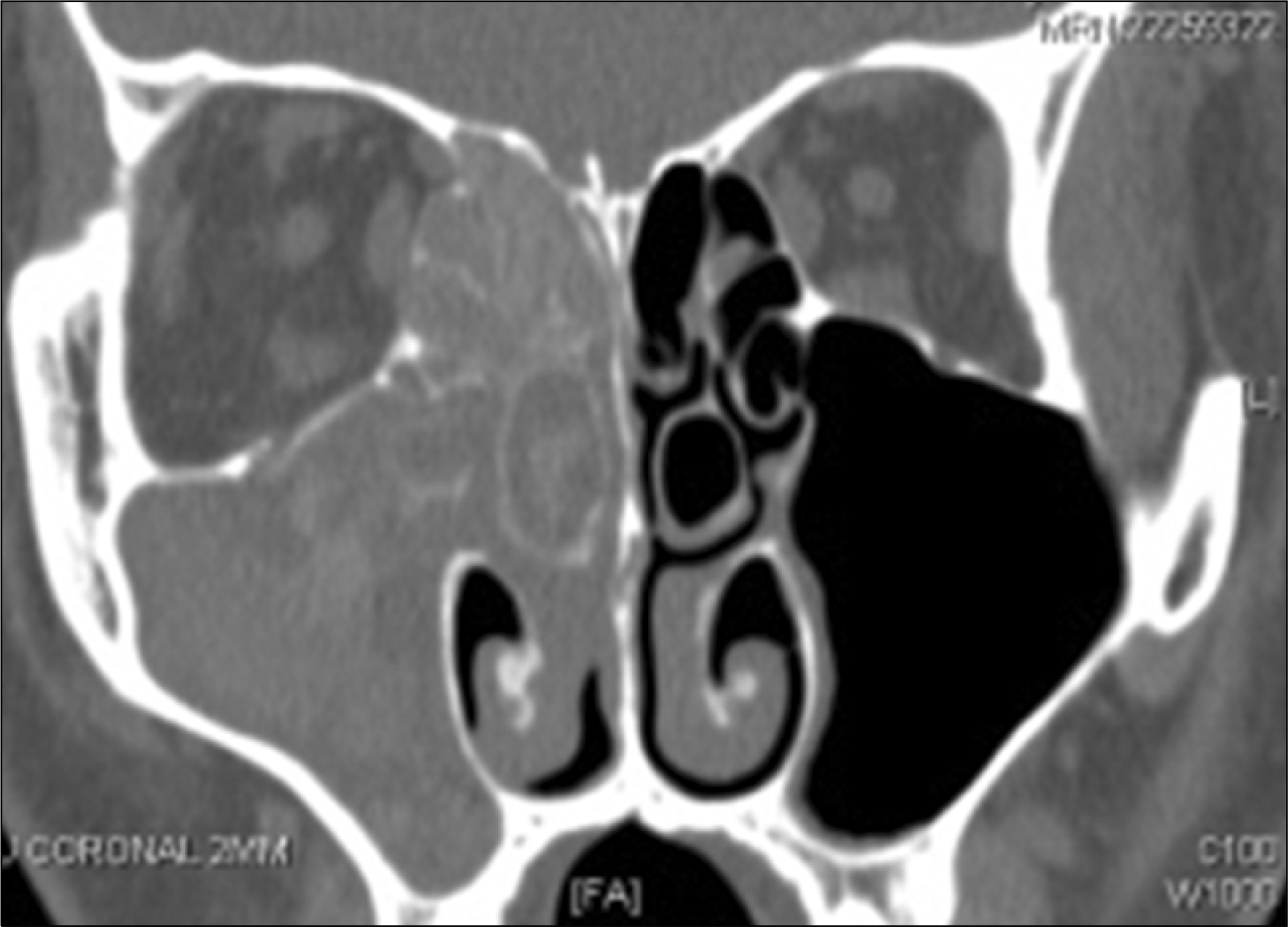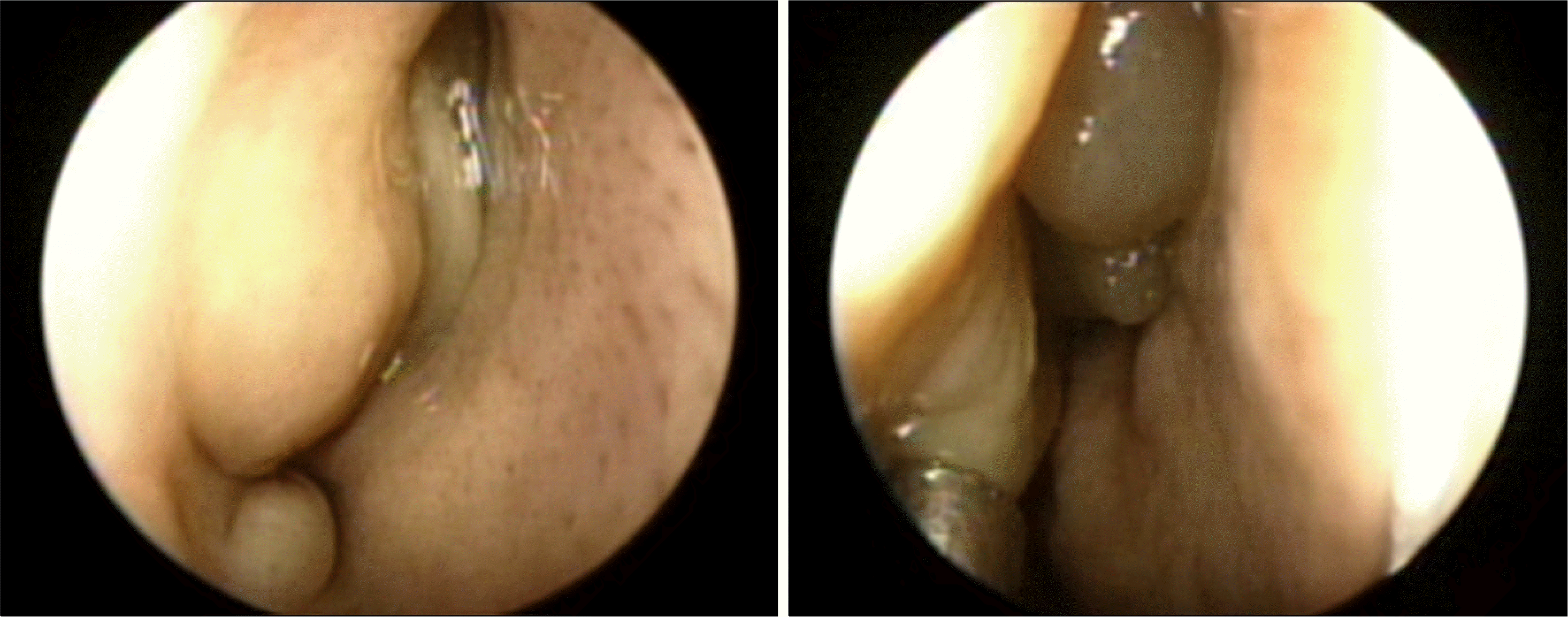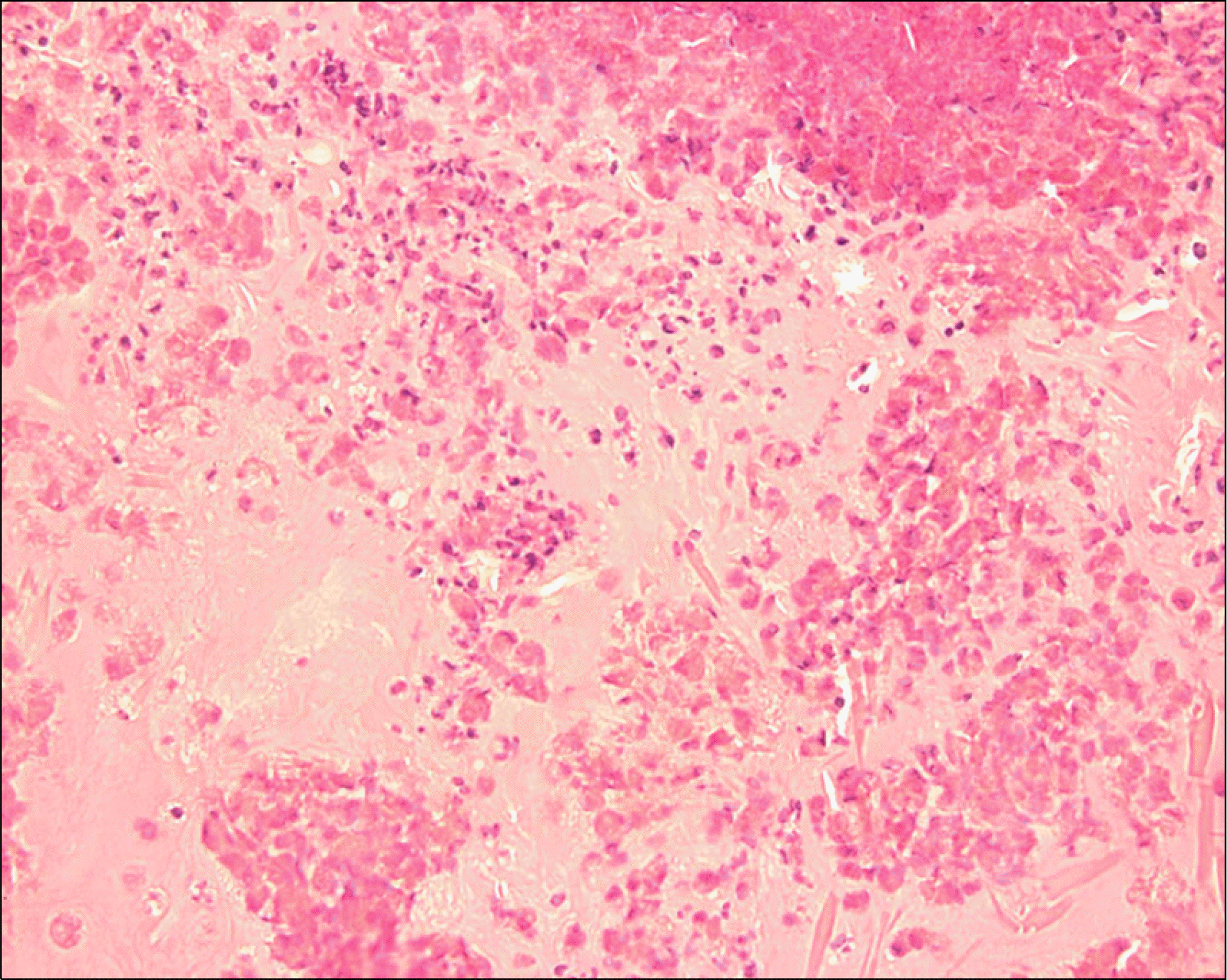Abstract
Allergic fungal sinusitis (AFS) is a noninvasive form of fungal rhinosinusitis resulting from an IgE-mediated hypersensitivity reaction. The diagnosis of AFS can be established by demonstrating type I hypersensitivity, presence of fungus in mucus, eosinophilic mucin, nasal polyposis, and characteristic CT scans. Although AFS is not unusual and its incidence may be increasing, few cases have been reported in Korea. Here, we report the first case of typical AFS in which Curvularia species was isolated by culture.
REFERENCES
1. Bent JP 3rd and Kuhn FA. Diagnosis of allergic fungal sinusitis. Otolaryngol Head Neck Surg. 1994; 111:580–8.

2. Schubert MS. Allergic fungal sinusitis: pathophysiology, diagnosis and management. Med Mycol. 2009; 47(Suppl 1):S324–30.

3. Pant H, Schembri MA, Wormald PJ, Macardle PJ. IgE-mediated fungal allergy in allergic fungal sinusitis. Laryngoscope. 2009; 119:1046–52.

4. Kim AY, Kim DH, Kim YM, Rha KS. Clinical characteristics of allergic fungal sinusitis. Korean J Otolaryngol. 2006; 49:384–9.
5. Rha KS, Sin GC, Lee OY, Kim JM. A case of allergic fungal sinusitis. Korean J Otolaryngol. 2000; 43:438–41.
6. Dhong HJ, Yoon SW, Chung SK. A case of allergic fungal sinusitis. Korean J Otolaryngol. 1999; 42:919–22.
7. Kim YM, Huh AJ, Im HS, Huh KY, Chang KH, Hong SK, et al. Efficacy of various treatment modalities and clinical characteristics of invasive and noninvasive fungal sinusitis. Korean J Med Mycol. 2001; 6:167–73.
8. deShazo RD and Swain RE. Diagnostic criteria for allergic fungal sinusitis. J Allergy Clin Immunol. 1995; 96:24–35.
9. Korean Society of Otorhinolaryngology - Head and Neck Surgery eds. Otorhinolaryngology. 1st ed.Reston: Ilchokak;2005. p. 322–5.
10. Perez-Jaffe LA, Lanza DC, Loevner LA, Kennedy DW, Montone KT. In situ hybridization for Aspergillus and Penicillium in allergic fungal sinusitis: a rapid means of speciating fungal pathogens in tissues. Laryngoscope. 1997; 107:233–40.

11. Chrzanowski RR, Rupp NT, Kuhn FA, Phillips AE, Dolen WK. Allergenic fungi in allergic fungal sinusitis. Ann Allergy Asthma Immunol. 1997; 79:431–5.

12. Korean Society for Laboratory Medicine eds. Laboratory Medicine. 4th ed.Reston: E-Public;2009. p. 541–53.
13. Rinaldi MG, Phillips P, Schwartz JG, Winn RE, Holt GR, Shagets FW, et al. Human Curvularia infections. Report of five cases and review of the literature. Diagn Microbiol Infect Dis. 1987; 6:27–39.
14. Korean Society for Laboratory Medicine eds. Laboratory Medicine. 4th ed.Reston: E-Public;2009. p. 669–74.
Fig. 2.
Coronal CT shows right nasal polyp with ipsilateral expansile sinusitis containing high attenuation material, which suggests allergic fungal sinusitis with associated polypoid mucocele.

Fig. 4.
The colonies growing on Sabouraud's dextrose agar, 25°C, 5 days (A) front and (B) reverse. Curvularia species appear as shiny velvety-black, fluffy growth on the colony surface. Microscopic examinations of conidia (lactophenol cotton blue stain; ×400) (C) Curvularia species is distinguished by septate, dematiaceous hyphae producing brown, geniculate conidiophores.





 PDF
PDF ePub
ePub Citation
Citation Print
Print




 XML Download
XML Download